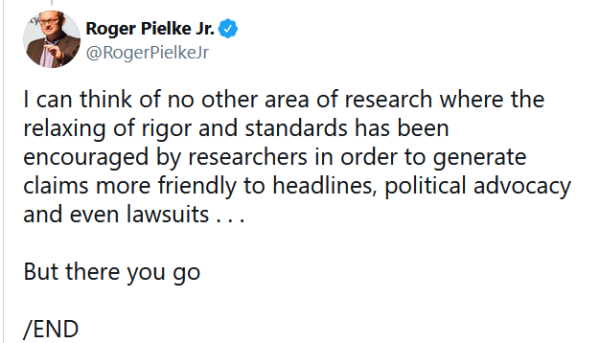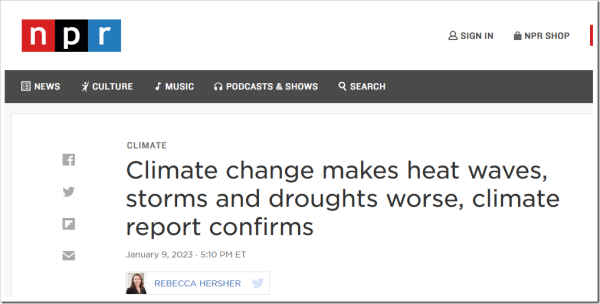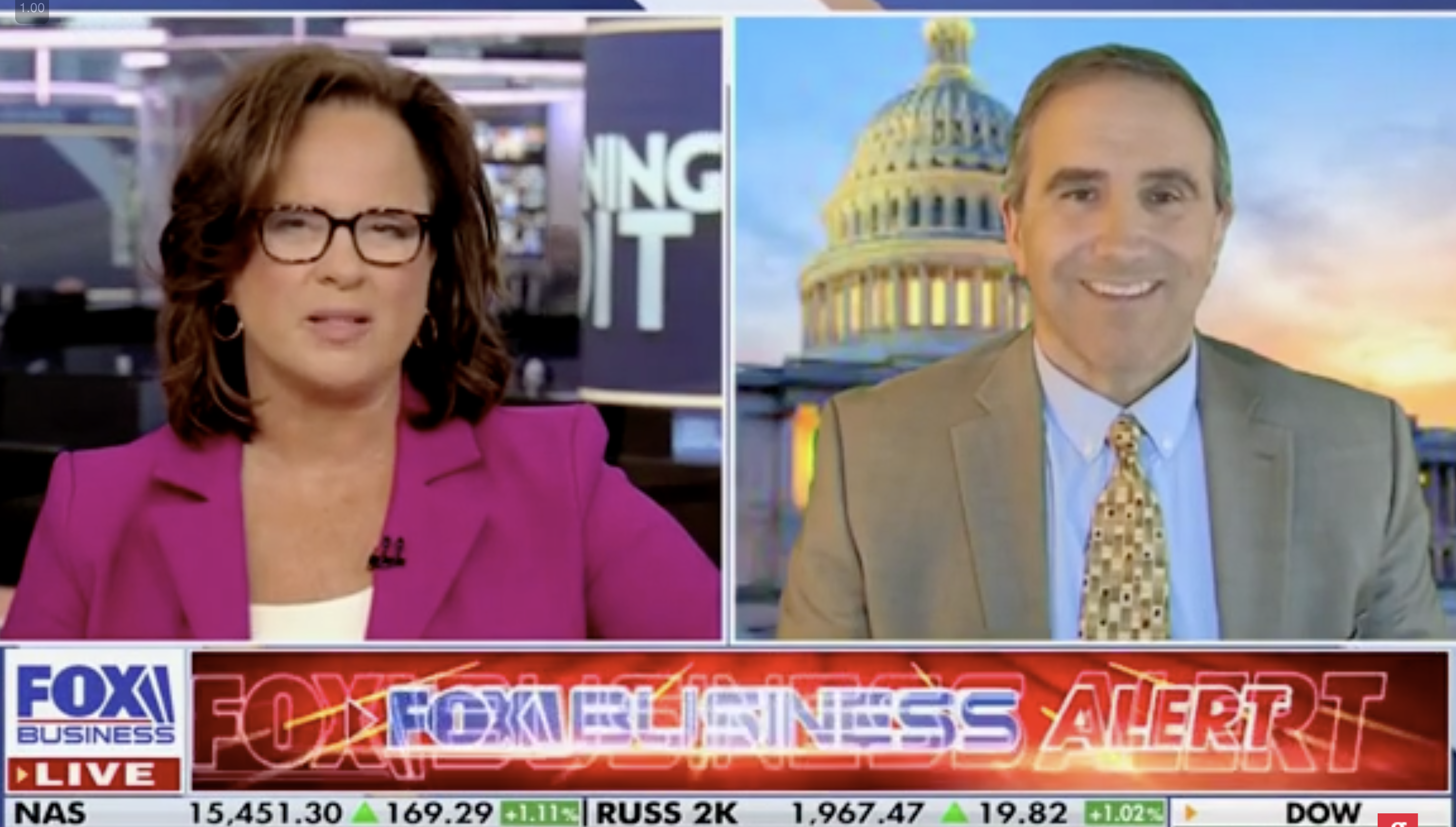By Paul Homewood
This new report is making the rounds:
Climate change is causing the weather around the world to get more extreme, and scientists are increasingly able to pinpoint exactly how the weather is changing as the Earth heats up.
A sweeping new report by top climate scientists and meteorologists describes how climate change drove unprecedented heat waves, floods and droughts in recent years. The annual report from the American Meteorological Society (AMS) compiles the leading science about the role of climate change in extreme weather.
“It’s a reminder that the risk of extreme events is growing, and they’re affecting every corner of the world,” says Sarah Kapnick, the chief scientist at the National Oceanographic and Atmospheric Administration (NOAA).
The Earth is already about 2 degrees Fahrenheit hotter than it was in the late 1800s, and scientists warn that humans must cut greenhouse gas emissions in half this decade to avoid catastrophic warming later this century.
One way to understand and predict the effects of a hotter Earth is to look for the fingerprints of climate change on extreme weather events such as floods, heat waves and droughts. The last decade has seen huge leaps forward for the field known as extreme-event attribution science, which uses statistics and climate models to detect global warming’s impact on weather disasters. The extreme drought in California and Nevada in 2021, for example, was six times more likely because of climate change.
One of the big takeaways from the new report is that heat waves that used to be virtually impossible are increasingly likely.
“Extreme heat events are more extreme than ever,” says Stephanie Herring, one of the authors of the report and a scientist at NOAA. “Research is showing they’re likely to become the new normal in the not so distant future.”
#
Paul Homewood comments:
Note that their so-called evidence is climate attribution modelling, which by definition is not evidence at all. Ross McKittrick, Professor of Economics, produced a paper in 2021 which destroyed the credibility of attribution modelling because of fundamental statistical flaws in the modelling.
One day after the IPCC released the AR6 I published a paper in Climate Dynamics showing that their “Optimal Fingerprinting” methodology on which they have long relied for attributing climate change to greenhouse gases is seriously flawed and its results are unreliable and largely meaningless. Some of the errors would be obvious to anyone trained in regression analysis, and the fact that they went unnoticed for 20 years despite the method being so heavily used does not reflect well on climatology as an empirical discipline.
My paper is a critique of “Checking for model consistency in optimal fingerprinting” by Myles Allen and Simon Tett, which was published in Climate Dynamics in 1999 and to which I refer as AT99. Their attribution methodology was instantly embraced and promoted by the IPCC in the 2001 Third Assessment Report (coincident with their embrace and promotion of the Mann hockey stick). The IPCC promotion continues today: see AR6 Section 3.2.1. It has been used in dozens and possibly hundreds of studies over the years. Wherever you begin in the Optimal Fingerprinting literature (example), all paths lead back to AT99, often via Allen and Stott (2003). So its errors and deficiencies matter acutely.
https://judithcurry.com/2021/08/18/the-ipccs-attribution-methodology-is-fundamentally-flawed/
Other scientific experts have been less reticent in their criticism. Professor Roger Pielke Jr for instance:

And Obama’s Climate Scientist, Steve Koonin, has commented:
It is significant that in this latest paper there is no attempt to use real world data to prove that the events they talk of are actually getting worse. We know, for instance, that the data on hurricanes shows that they are not, a fact which is even acknowledged by official bodies such as NOAA.
Weather attribution has been politicised since its early beginnings, and is undertaken for the express purpose of linking extreme weather to climate change. It should not be confused with real science.





